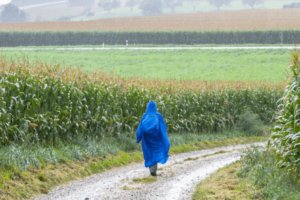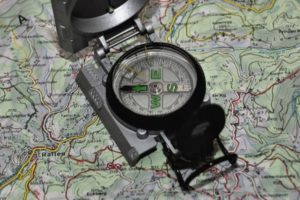I’ve got a few pair of hiking shoes in my collection, ranging from a pair of La Sportiva Nucleo High GTX which I think are the best long-range walking boots on the market today, to a pair of GTX VS which are great mid-range boots. Still, if I’m out for a walk in the countryside for a couple of hours with the dogs, I used to wear a pair of trainers. This was until hiking shoes were developed.
Hiking shoes are the trainers or running shoes of hikers. They’re light and flexible they allow you to glide over rough, uneven terrain while still protecting your feet. Models come in both waterproof and non-waterproof variants, are much stiffer and therefore provide better support, while still being light enough to notice them hardly.
Walking Shoes Vs. Walking Boots?
There are many reasons why you should consider buying walking shoes. Here are just four of the main ones;
- Walking shoes are lighter.
- Walking shoes are the better option if you are hiking in hot weather.
- You can move faster and with more ease in walking shoes.
- Walking shoes are the better option if you are hiking on flat terrain.
In general, walking shoes are more flexible and provide you with higher speed when you are hiking across relatively flat terrain. Of course, they also have their disadvantages. Unlike boots, they rarely offer support for the ankles and, especially if you wear then on mountainous terrain, can expose the ankle to twists and sprains.
While we would suggest that you wear walking shoes when you need to go quickly over flat terrain, and boots when you need to walk over rough terrain, the question remains: what should you wear on your feet where the terrain varies or when it is medium to difficult. The answer is that it comes down to personal preference. If you have had room in your rucksack, you may even consider taking a pair of both.
The Anatomy of a Walking Shoe
A walking shoe is in between a walking boot and a pair of trainers. Like boots, they aim to protect your feet, and like trainers, they aim to provide flexibility and freedom to your feet. In this regard, they are made up of material that combines both types of shoes. A walking shoe is made up of five main parts; the upper part of the shoe, the insole, the midsole, the outsole and the heel and toe bumpers.
The Upper Part of the Shoe
The upper part of the shoe is the main body of the shoe that covers the top and sides of the foot. The upper part of a hiking shoe should be made from a strong, waterproof, but relatively flexible material such as leather and suede. Since it is designed for hiking it should strike a balance between softness and hardness. The upper part of a hiking shoe will be no good if doesn’t offer any protection.
Insole
The insole is the part that sits underneath your foot that you can slip in and out your shoe. Usually padded, its main aim is to provide comfort. Its secondary aim is to help provide and maintain flexibility. The great thing about them, however, is that that they are not permanently attached to the shoe. So if you prefer thick or thinner insoles, you can take them out and replace them with your preference. Their downside is that they tend to wear out. If you are out walking all the time, they will quickly lose their shape.
Midsole
The midsole is the rubber part of the shoe that divides the insole and the outsole. At first glance, it may look like it’s part of the outsole, but if you look closely, it’s often a different colour. Made from soft material such as EVA (Ethylene-vinyl acetate) It’s aim is to provide protection to the bottom of the foot. Without it either sharp objects could rise through the outsole and cut your foot or rocks could press into the foot and badly bruise it. If you are thinking of buying hiking shoes for use over rocky terrain, you should consider buying a pair with midsoles made from such thick material as Phylon.
Outsole
The bottom of the shoe is called the outsole and provides you with the grip you need to walk over pretty much any terrain. The rougher, more uneven the ground, the thicker and stronger you will want your outsole. If you look at the bottom of a hiking boot, for example, you will see how thick and sturdy an outsole can be. When you wear them, you will feel very steady on your feet. Outsoles on hiking shoes don’t provide the same sort of grip, but they are a lot more flexible and lightweight. Their disadvantage is that they don’t last so long. Most people with a broken outsole will buy a new shoe.
Heel and Toe Bumpers
Heel and toe bumpers protect the heels and toes. On most hiking shoes the protection comes with a strip of padding around the front and top of the toes and the heel. You may be able to more expensive shoes with steel toe caps. While these can seem counterproductive if you are looking for the shoes to provide you with flexibility and speed, they can be necessary if you are using them for hiking over rocky terrain.
Material
Walking shoes tend to be made from two types of material; suede/leather and fabric. Sometimes they are a mixture of both. Leather is stronger than fabric and more waterproof. If the top of your shoe, for example, is made of fabric, it will let in water. It’s advantage over leather, however, is that it is a lot more lightweight and flexible.
Just think how much easier it is to walk in a pair of fabric trainers than it is to walk in a pair of heavy leather boots. As an alternative you can buy a pair of walking shoes made out of suede, which is in between the two: it is both strong and flexible, though, of course nether not as strong as leather nor as flexible as fabric.







